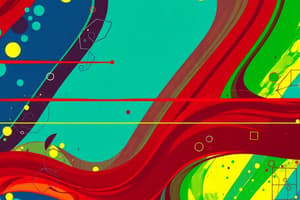Podcast
Questions and Answers
Match the packet fragmentation strategies with their descriptions:
Match the packet fragmentation strategies with their descriptions:
Transparent fragmentation = The fragments are not reassembled until the final destination. Nontransparent fragmentation = The fragments are reassembled in the receiver router.
Match the packet header fields with their uses:
Match the packet header fields with their uses:
Packet number = To determine the order of the fragments. Fragment offset = To determine the position of the data. End-of-packet flag = To indicate the end of the packet. Packet size = To determine the size of the packet.
Match the disadvantages of the fragmentation strategies with their descriptions:
Match the disadvantages of the fragmentation strategies with their descriptions:
Transparent fragmentation = The overhead can be higher than with nontransparent fragmentation. Nontransparent fragmentation = The packet is needed to be repeatedly fragmented and reassembled.
Match the packet sizes with their descriptions:
Match the packet sizes with their descriptions:
Match the packet fragmentation scenarios with their descriptions:
Match the packet fragmentation scenarios with their descriptions:
Match the packet fields with their uses:
Match the packet fields with their uses:
Match the packet fragmentation strategies with their advantages:
Match the packet fragmentation strategies with their advantages:
Match the packet sizes with their scenarios:
Match the packet sizes with their scenarios:
Match the packet fragmentation scenarios with their figures:
Match the packet fragmentation scenarios with their figures:
Match the packet header fields with their descriptions:
Match the packet header fields with their descriptions:
Flashcards are hidden until you start studying




